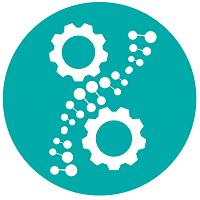Manufacturing & Analytical Characterization
Symposium: Advancements in Manufacturing and Characterization of Pharmaceuticals/ Biopharmaceuticals 2
Addressing Practical Challenges in CM via Novel Hardware and Automation
Monday, November 10, 2025
9:00 AM - 9:30 AM CT
Location: 302 ABC

Sarang Oka, PhD
Scientific Fellow
Hovione
Princeton, New Jersey
Speaker(s)
Continuous manufacturing process trains today are characterized by the mass throughput that they can process. This includes a nominal range that is associated with the normal operating range of a specific unit operation of the process train – in many units these are the continuous blenders. The need to operate at throughputs well beyond the nominal range normally requires switching over to a completely different scale machine, requiring additional investment and development time. Innovation developed as part of this work addressed this challenge with a modular process train that enables the user to swap between “high-throughput” and “low-throughput” linear blenders. Additionally, modularity is built into film coating step that enables the user to “add” more coating units when there is an additional need for capacity. The modular hardware is complemented by adaptable software that facilitates seamless switching between low throughput and high throughput modes of the process train. In this work, flexibility has been demonstrated across an operational range of 10-100 kg/hr.
The critical role of residence time distribution (RTD) studies in characterizing continuous processes is well understood. Despite the need for accurate estimation of RTD parameters, characterization experiments today are performed manually, resulting in significant risk for human-induced experimental error. Moreover, they require a high level of coordination and personnel involvement. A second innovation and part of the same work constitutes the development of an auto-injector for the tracer material at the outlet of the loss-in-feeders coupled with an automated sampling device for tablets. This enables the entire RTD experiment to be run automatically by a single individual from a single point of control. The development includes the hardware elements and associated software for the automation control system to execute the experiment. A further addition of the automated tablet sampling system (inclusive of packaging and labeling) is expected to increase efficiency in a GMP environment and protect the user when working with high potent compounds.
The final deliverable of this work concerns the development related to the automation control system that enables the user to run pre-configured muti-point DOEs without human intervention. Development in the recipe management system of the control software allows the user to pre-configure a DOE. This includes setting the operating set points at different conditions, the length of operation for each set point, and the length of transition between set points coupled with automated sampling. The objective of the work is to greatly reduce the number of users needed to run DOEs on continuous process trains, minimize potential for experimental error and exposure of the user to potent materials. The innovations have been documented in two provisional patents.
The critical role of residence time distribution (RTD) studies in characterizing continuous processes is well understood. Despite the need for accurate estimation of RTD parameters, characterization experiments today are performed manually, resulting in significant risk for human-induced experimental error. Moreover, they require a high level of coordination and personnel involvement. A second innovation and part of the same work constitutes the development of an auto-injector for the tracer material at the outlet of the loss-in-feeders coupled with an automated sampling device for tablets. This enables the entire RTD experiment to be run automatically by a single individual from a single point of control. The development includes the hardware elements and associated software for the automation control system to execute the experiment. A further addition of the automated tablet sampling system (inclusive of packaging and labeling) is expected to increase efficiency in a GMP environment and protect the user when working with high potent compounds.
The final deliverable of this work concerns the development related to the automation control system that enables the user to run pre-configured muti-point DOEs without human intervention. Development in the recipe management system of the control software allows the user to pre-configure a DOE. This includes setting the operating set points at different conditions, the length of operation for each set point, and the length of transition between set points coupled with automated sampling. The objective of the work is to greatly reduce the number of users needed to run DOEs on continuous process trains, minimize potential for experimental error and exposure of the user to potent materials. The innovations have been documented in two provisional patents.
Learning Objectives:
- Participants will learn of automated, novel approaches to execute residence time distribution experiments in CM process trains.
- Participants will learn of automated, novel approaches to execute DOEs in CM process trains, coupled with automated sampling with the goal of one-person DOE execution.
- Participants will learn of a novel approach that combines batch and continuous processing in a single process train and how built-in modularity enables the operation over a wide throughput range.

